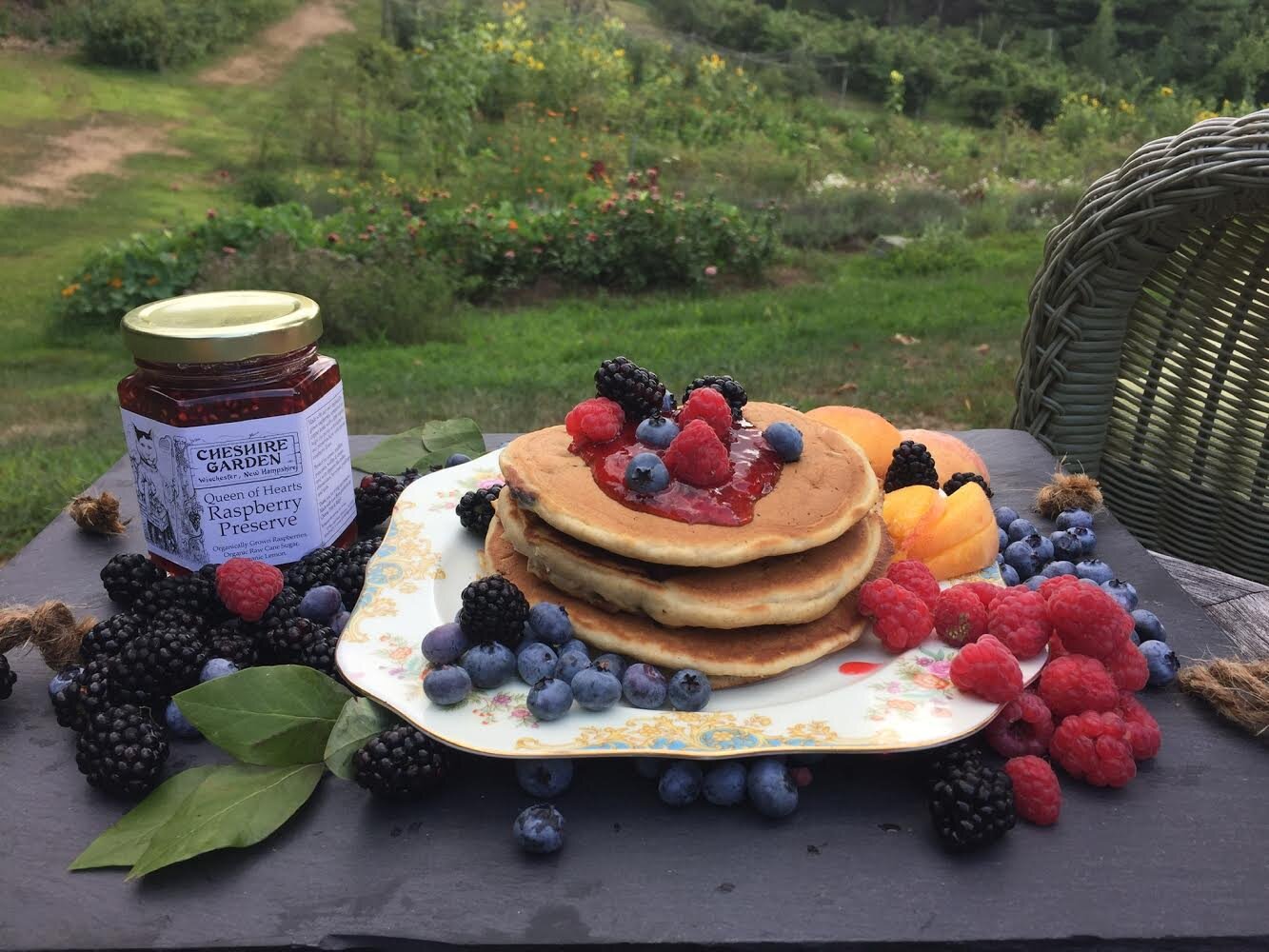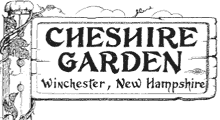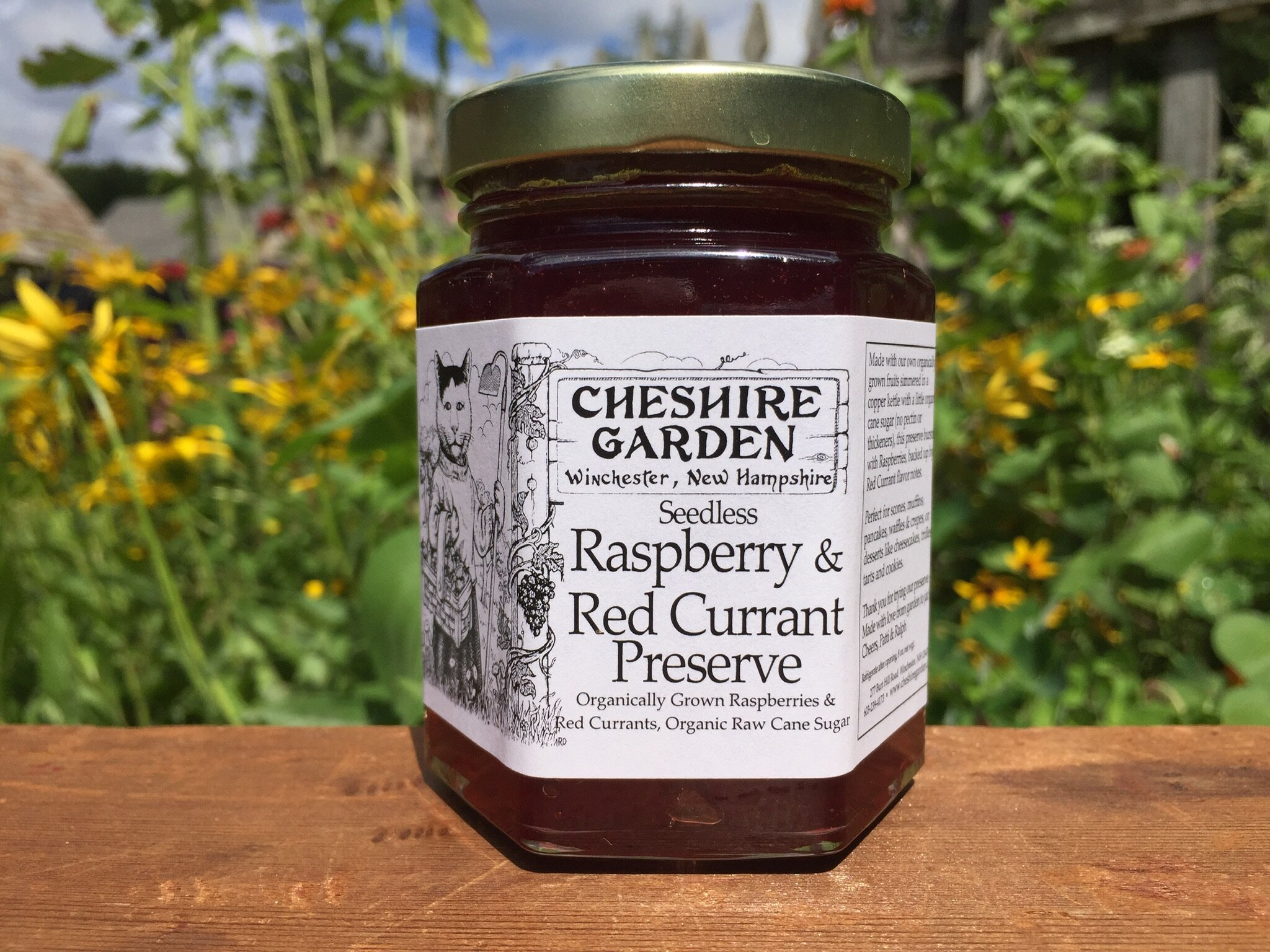
Jewels in a Jar
Old-Fashioned
Preserves
Softly-set Preserves made with half the sugar of ordinary jams
No added pectin or other thickeners
No preservatives
Fruits
We start with our own fruits - grown organically with tender-loving care. Fruits are my passion. I love everything about growing them, eating them, and cooking them. It's hard to convey how happy I am picking luscious, ripe raspberries on a hot summer day, or harvesting the long-awaited Damson plums in September.
Fruits that are allowed to ripen fully in the summer sun sparkle like jewels. Their aroma is intoxicating. Their flavor is more intense and more complex than that of fruits that must travel to a market. It's that perfect flavor of sun-ripened fruit that we try to capture by making our preserves with as little sugar as possible.
Sugar
We use sugar made by evaporating the juice of organically grown sugar cane into crystals. It's less refined than white table sugar and has a lovely sparkle.
Making Peach Preserves
We make our preserves the old-fashioned way by cooking the fruit in a wide kettle with just enough sugar to ensure a soft set. Using 2/3 fruit to 1/3 sugar, I stir every kettle of boiling fruit as it cooks down. As the preserves thicken and I can feel the resistance in the spoon increase, I begin testing the fruit, coating and tilting the spoon until I know it's ready. Then I remove the kettle from the heat, stir a bit more, and ladle the fruit into jars. Ralph boils the lids, covers the jars, and cans them in the boiling water bath canner. Each batch makes just a dozen jars.
Nowadays, most jams - even homemade - are made by adding pectin, a starch that gels the fruit in just a minute, but only with the addition of large amounts of sugar - usually 2/3 sugar to 1/3 fruit. (Since we don't rely on adding pectin to facilitate a quick gel, we can reverse this to 2/3 FRUIT to 1/3 SUGAR!)
Our way is a lot more work, takes a lot longer, and our yields are smaller - about half that of typical jams - but the flavor is unsurpassed!
Our preserves have a deeper color, more intense flavor, and softer texture than ordinary jams and they spread easily over toast, muffins, scones, popovers, biscuits, and waffles. They are also wonderful with desserts such as trifles, cheesecakes, crepes, tarts and puddings. They provide a brilliant addition to glazes or sauces for meat and poultry.
"What's the difference between 'Preserve' and 'Jam' or 'Jelly' or 'Fruit Spread' or 'Fruit Butter' or 'Spreadable Fruit' or 'Spoonable Fruit'.....?!?!?!"
"Preserve" simply means fruits "preserved" or cooked and put up in glass jars for winter storage. Preserves typically are made of whole fruit or chunks of fruit, softly set-up or in syrup. "Jellies" are made from fruit juice (no pulp) and lots of sugar and are clear, sweet and firmly set. "Jams" are made from mashed fruit and lots of sugar and are also sweet and firmly set. "Fruit Spread", "Fruit Butter", "Spreadable Fruit" and "Spoonable Fruit" all refer to products, like ours, that are made with less sugar and no added pectin, so they are softly set. (There is a limit to how much you can reduce the sugar without over cooking the fragile berries.)
Since we rely on only the natural pectin present in each of the fruits we grow, they vary in the firmness of the set. Some, like Black Currants, loaded with natural pectin, set up firmly in no time. On the other hand, Blueberries and Elderberries have almost no natural pectin and set up as sauce and syrup. Peaches and Strawberries are somewhere in the middle, and Raspberries vary with the cultivar and the season.
















